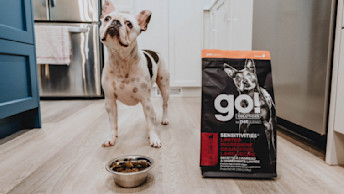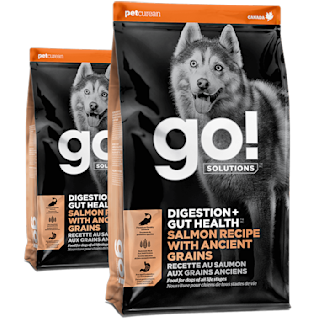May 7, 2024
Everything You Need to Know About Transitioning Dog Food

Maybe you are looking to address a food sensitivity by switching to a novel protein diet, or maybe you simply want to change up the flavours and ingredients to keep things interesting for your furry friend. Whatever the case, changing your dog’s food is more complex than simply pouring their new diet into a bowl.
The digestive process is extremely complex and delicate, requiring various enzymes and naturally occurring bacteria to be successful. When providing a new diet, it is important to slowly transition your dog to the new food, giving their bodies a chance to adjust to this change.
How to Transition Dog Food
This transition period can be between 10-14 days long, depending on your dog’s sensitivity to change:
Day 1 & 2: Feed 80% of your dog’s old food with 20% of the new food
Day 3 & 4: Feed 60% of your dog’s old food with 40% of the new food
Day 5 & 6: Feed 40% of your dog’s old food with 60% of the new food
Day 7, 8 & 9: Feed 20% of your dog’s old food with 80% of the new food
Day 10 & Forever: Feed 100% new food
Since the digestive process can be delicate, diarrhea and/or vomiting is often a sign of a transition happening too quickly. If your dog is experiencing any sort of digestive upset, try slowing down the process, allowing their digestive tract more time to adjust. You can do this by reducing the amount of new food provided at the next feeding.
Symptoms of changing dog food too quickly:
- Gastrointestinal upset including vomiting and diarrhea
- Regurgitation after eating
- Decreased appetite
- Constipation
To limit the amount of digestive upset your pet may experience during this transition period, make sure your dog has access to fresh, clean water and limit treats or other food sources.
Switching from Raw Food to Kibble
From a macronutrient perspective, kibble and raw often differ. Kibble typically has more fibre, which can be helpful in digestive health! The microbiome may need additional time to adjust and grow the best population to effectively digest this, so it may be helpful to increase the transition time, and choose a food with specific digestive health ingredients to support the microbiome.

Recommended Solution
Food to support your dog’s gut health
Formulated by experts, our digestive dog food recipes feature fibre-rich ingredients like ancient grains and psyllium husk, plus probiotics to support a healthy gut microbiome and good digestion.
Digestion + Gut Health dog food
Combination feeding can also be an option, as kibble can provide a complete and balanced base. You can also choose wet food Tetras to add in for a moisture boost.


